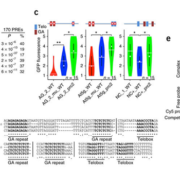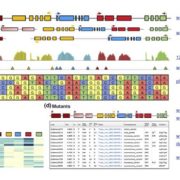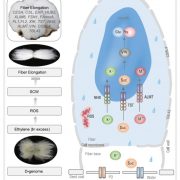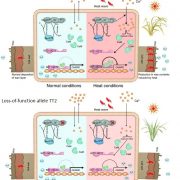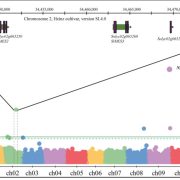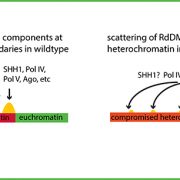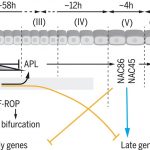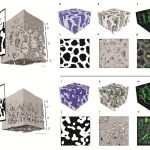Microtubule-based perception of mechanical conflicts controls plant organ morphogenesis (Sci. Adv.)
 Morphogenesis is a critical process in plants and animals that allows a cell, tissue, or organism to reach its final shape. In Arabidopsis thaliana, the formation of lateral root primordia (LRP) is an excellent example of organ morphogenesis that involves cell remodeling throughout differential growth of an internal tissue. In this study, Stöckle et al. used live-cell imaging and cell type-specific genetic perturbations to show how differences in cortical microtubule organization between the inner and outer sides of the endodermis control LRP initiation. Before LRP initiation, cortical microtubules are more anisotropic on the side of the cell facing inwards and more disorganized on the other side. During LRP initiation, cortical microtubules on the inner side become disorganized. The reorganization of the cortical microtubules in the endodermal cells requires SHORT HYPOCOTYL2 (SHY2) and MICROTUBULE ASSOCIATED PROTEIN 70-5 (MAP70-5). map70-5 mutants display no particular organization of endodermal cortical microtubules and show flattened LRP. Stöckle et al. show that MAP70-5 is required for: i) the organization of cortical microtubules on the inner side of the endodermis, ii) remodeling of the endodermis during LRP initiation, and iii) LRP development and morphogenesis. The authors propose that cortical microtubules and MAP70-5 integrate the mechanical signals of LRP organogenesis. (Summary by Andrea Gómez-Felipe @andreagomezfe) Sci. Adv. 10.1126/sciadv.abm4974
Morphogenesis is a critical process in plants and animals that allows a cell, tissue, or organism to reach its final shape. In Arabidopsis thaliana, the formation of lateral root primordia (LRP) is an excellent example of organ morphogenesis that involves cell remodeling throughout differential growth of an internal tissue. In this study, Stöckle et al. used live-cell imaging and cell type-specific genetic perturbations to show how differences in cortical microtubule organization between the inner and outer sides of the endodermis control LRP initiation. Before LRP initiation, cortical microtubules are more anisotropic on the side of the cell facing inwards and more disorganized on the other side. During LRP initiation, cortical microtubules on the inner side become disorganized. The reorganization of the cortical microtubules in the endodermal cells requires SHORT HYPOCOTYL2 (SHY2) and MICROTUBULE ASSOCIATED PROTEIN 70-5 (MAP70-5). map70-5 mutants display no particular organization of endodermal cortical microtubules and show flattened LRP. Stöckle et al. show that MAP70-5 is required for: i) the organization of cortical microtubules on the inner side of the endodermis, ii) remodeling of the endodermis during LRP initiation, and iii) LRP development and morphogenesis. The authors propose that cortical microtubules and MAP70-5 integrate the mechanical signals of LRP organogenesis. (Summary by Andrea Gómez-Felipe @andreagomezfe) Sci. Adv. 10.1126/sciadv.abm4974


